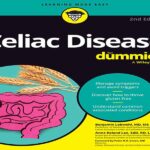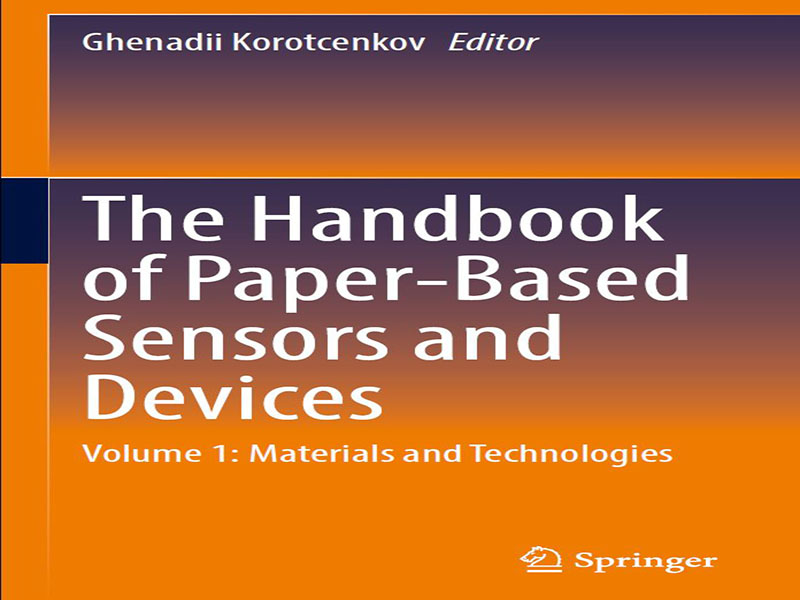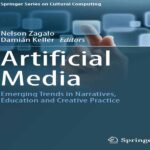- عنوان کتاب: The Handbook of Paper-Based Sensors and Devices, Volume 1 Materials and Technologies
- نویسنده: Ghenadii Korotcenkov
- حوزه: حسگر
- سال انتشار: 2025
- تعداد صفحه: 857
- زبان اصلی: انگلیسی
- نوع فایل: pdf
- حجم فایل: 17.5 مگابایت
اخیراً، علاقه فزایندهای به استفاده از سلولز و کاغذ مبتنی بر سلولز در الکترونیک آلی، انعطافپذیر، چاپی و پوشیدنی، نه تنها به عنوان یک بستر کاغذی، بلکه به عنوان مواد یا اجزای فعال در مواد کامپوزیتی، که در آن سلولز استحکام مکانیکی و ریزساختار سهبعدی مطلوب را فراهم میکند، وجود داشته است. کاغذ نوعی ماده دوبعدی است که به صورت شیمیایی از الیاف سلولز فرآوری میشود. باید توجه داشت که سلولز فراوانترین و تجدیدپذیرترین پلیمر طبیعی روی زمین است. سلولز ماده اصلی تشکیلدهنده همه گیاهان است. با این حال، غلظت سلولز در ساقه گیاه بیشتر از برگهای آن است. علاوه بر این، سلولز در منابع مختلفی یافت میشود، نه تنها محدود به گیاهان (چوب، محصولات سالانه و ضایعات کشاورزی باقیمانده) بلکه در حیوانات دریایی (تونیکاتها)، جلبکها، قارچها، باکتریها، بیمهرگان و حتی آمیبها نیز یافت میشود. در طول سه دهه گذشته، دانشمندان روشهای مختلفی را برای ترکیب خواص منحصر به فرد کاغذ در الکترونیک و حسگرها بررسی کردهاند. نانوسلولز به دلیل خواص فیزیکی قابل توجه، استحکام مکانیکی، شیمی سطح ویژه، نسبت مساحت به حجم بالا، شفافیت نوری، خواص بیولوژیکی عالی سلولز، هزینه کم و قابلیت پردازش محلول، به طور گسترده به عنوان پایهای برای مواد فعال الکترونیکی در کاربردهایی مانند حسگرهای شیمیایی، فیزیکی، نوری و زیستی و دستگاههای الکترونیکی برای زیستپزشکی، نظارت بر محیط زیست، مراقبتهای بهداشتی و فناوریهای انرژی مورد استفاده قرار میگیرد. تاکنون، به ویژه در سالهای اخیر، کتابهای زیادی در مورد نانوسلولز و کاربردهای آن منتشر شده است. از جمله آنها میتوان به موارد زیر اشاره کرد: N. Lin, G. Zhu (ویراستاران) Surface Modifications of Nanocellulose, Elsevier, 2024; L. Hu, F. Jiang, C. Chen (ویراستاران) Emerging Nanotechnologies in Nanocellulose, Springer, 2023; A.Z. Yaser, M.S. Sarjadi, and J. Lamaming (ویراستاران) Cellulose, Taylor and Francis, 2023; وی. کومار، اس. ساران، ای. پاندی، سی. آر. سوکول (ویراستاران) سلولز باکتریایی، تیلور و فرانسیس، ۲۰۲۳؛ ام. شبیر (ویراستاران) سلولز و کامپوزیتهای بازسازیشده، اشپرینگر نیچر، ۲۰۲۳؛ آر. اورائون، دی. راوتانی، پی. سینگ، سی. ام. حسین (ویراستاران) مواد نانوسلولزی، الزویر، ۲۰۲۲؛ ای. بارهوم (ویراستاران) کتابچه راهنمای نانوسلولزها، اشپرینگر، ۲۰۲۲؛ اس. ام. ساپوان، ام. ان. اف. نورراهیم، آر. ای. ایلیاس (ویراستاران) کاربردهای صنعتی نانوسلولز و نانوکامپوزیتهای آن، انتشارات وودهد، ۲۰۲۲؛ جی. اچ. لی (ویراستاران)
دستگاههای تشخیصی پزشکی مبتنی بر کاغذ، اشپرینگر نیچر، ۲۰۲۱؛ دبلیو. آر. دی آرائوخو، تی. آر. ال. سی. Paixão (ویراستاران) دستگاههای تحلیلی مبتنی بر کاغذ برای تجزیه و تحلیل شیمیایی و تشخیص، Elsevier، 2021، و دیگران. با این حال، بیشتر این کتابها بر سنتز نانوسلولز، خواص آن و کاربرد آن در زمینههای خاص، مانند کاربردهای زیستپزشکی و محیطی، متمرکز هستند. علاوه بر این، به عنوان یک قاعده، این کتابها در انتخاب موضوعات برای فصلها و انسجام در ارائه مطالب موجود در کتاب، سیستماتیک نیستند. علاوه بر این، تجزیه و تحلیل دقیق حسگرهای مختلف، مانند حسگرهای گاز و رطوبت، حسگرهای الکتروشیمیایی، حسگرهای فیزیکی، حسگرهای نوری و حسگرهای زیستی که میتوانند از کاغذ و روی آن ساخته شوند، عملاً در این کتابها وجود ندارد. همین وضعیت در مورد دستگاههای پشتیبانی شده با کاغذ، مانند ترانزیستورها، دیودهای نوری، حافظه، ابرخازنها، سلولهای خورشیدی، باتریها و برچسبهای RFID که برای کاربردهای الکترونیک و فناوری انرژی طراحی شدهاند، مشاهده میشود. در این راستا، دستیابی به تصویر کاملی از امکانات کاغذ برای توسعه دستگاههای مختلف انعطافپذیر و پوشیدنی کارآمد مبتنی بر کاغذ و پشتیبانی شده با کاغذ غیرممکن است. بنابراین، ما تصمیم گرفتیم این شکاف را پر کنیم و کتاب «راهنمای حسگرها و دستگاههای مبتنی بر کاغذ» را منتشر کنیم که اطلاعات کاملی در مورد سلولز در حالتهای مختلف آن و همچنین در مورد ساخت و کاربرد حسگرهای انعطافپذیر مختلف مبتنی بر کاغذ و پشتیبانیشده با کاغذ، سیستمهای نظارتی پوشیدنی و دستگاههای الکترونیکی، اپتوالکترونیکی و فوتوالکترونیکی انعطافپذیر ارائه میدهد. امیدواریم تلاش ما برای تهیه چنین کتابی موفقیتآمیز بوده باشد. برای راحتی استفاده عملی، این کتاب راهنما به سه بخش تقسیم شده است: جلد 1: مواد و فناوریها، جلد 2: حسگرها و جلد 3: مهندسی زیستپزشکی و محیط زیست، الکترونیک و فناوریهای انرژی. فصلهای کتاب «راهنمای حسگرها و دستگاههای مبتنی بر کاغذ. جلد 1: مواد و فناوریها» خواص فیزیکی، شیمیایی و الکترونیکی سلولز را شرح میدهند که باعث افزایش علاقه به این ماده میشود. جنبههای مختلف تحقیقات نانوسلولز، مانند سنتز اشکال مورفولوژیکی مختلف با روشهای مختلف، روشهای مختلف اصلاح سطح (شیمیایی و فیزیکی)، سنتز کامپوزیت با روشهای مختلف و توسعه هیدروژلها و آئروژلهای آن، مورد بحث قرار گرفته است. سلولز همچنین میتواند به شکل میکروفیبریلهای خالص و بسیار بلوری توسط باکتریها سنتز شود. این شکل خاص از نانوسلولز، که سلولز باکتریایی نامیده میشود، در فصل ویژهای از این جلد مورد بحث قرار گرفته است. تجزیه و تحلیل
Recently, there has been a growing interest in the use of cellulose and cellulosebased paper in organic, flexible, printed, and wearable electronics, not only as a paper substrate but also as active materials or components in composite materials, where cellulose provides mechanical strength and favorable three-dimensional microstructure. Paper is a form of 2D material that is chemically processed from cellulose fibers. One should note that cellulose is the most abundant and renewable natural polymer on earth. Cellulose is the major constituent in all plants. However, cellulose is known to be in higher concentration in a plant stem than in its leaves. Moreover, cellulose is found in various sources, not only limited to plants (wood, annual crops, and residual agricultural waste) but also in marine animals (tunicates), algae, fungi, bacteria, invertebrates, and even amoeba. Over the last three decades, scientists have explored different ways to incorporate the unique properties of paper into electronics and sensorics. Due to its remarkable physical properties, mechanical strength, special surface chemistry, large area-to-volume ratio, optical transparency, excellent biological properties of cellulose, low cost, and solution processability, nanocellulose is widely used as a support for electronically active materials in applications, such as chemical, physical, optical, and biosensors and electronic devices for biomedicine, environment monitoring, healthcare, and energy technologies. By now, especially in recent years, a lot of books have been published on nanocellulose and its applications. Among them are the following: N. Lin, G. Zhu (eds.) Surface Modifications of Nanocellulose, Elsevier, 2024; L. Hu, F. Jiang, C. Chen (eds.) Emerging Nanotechnologies in Nanocellulose, Springer, 2023; A.Z. Yaser, M.S. Sarjadi, and J. Lamaming (eds.) Cellulose, Taylor and Francis, 2023; V. Kumar, S. Saran, A. Pandey, C. R. Soccol (eds.) Bacterial Cellulose, Taylor and Francis, 2023; M. Shabbir (ed.) Regenerated Cellulose and Composites, Springer Nature, 2023; R. Oraon, D. Rawtani, P. Singh, C.M. Hussain (eds.) Nanocellulose Materials, Elsevier, 2022; A. Barhoum (ed.) Handbook of Nanocelluloses, Springer, 2022; S.M. Sapuan, M.N.F. Norrrahim, R.A. Ilyas (eds.) Industrial Applications of Nanocellulose and Its Nanocomposites, Woodhead Publishing, 2022; J.H. Lee (ed.) Paper-Based Medical Diagnostic Devices, Springer Nature, 2021; W.R. de Araujo, T.R.L.C. Paixão (eds.) Paper-Based Analytical Devices for Chemical Analysis and Diagnostics, Elsevier, 2021, and others. However, most of these books are focused on the synthesis of nanocellulose, its properties, and its use in specific areas, such as biomedical and environment applications. In addition, as a rule, these books are not systematic in the choice of topics for chapters and consistency in the presentation of the material included in the book. In addition, detailed analysis of the various sensors, such as gas and humidity sensors, electrochemical sensors, physical sensors, optical sensors, and biosensors that can be made from and on the paper, is practically absent from these books. The same situation is observed with paper-supported devices, such as transistors, light diodes, memory, supercapacitors, solar cells, batteries, and RFID tags, designed for applications in electronics and energy technology. In this regard, it is impossible to get a complete picture of the possibilities of paper for the development of various efficient paper-based and paper-supported flexible and wearable devices. Therefore, we decided to close this gap and publish the book The Handbook of Paper-based Sensors and Devices that provides complete information both about cellulose in its various states and about the manufacturing and application of paper-based and paper-supported various flexible sensors, wearable monitoring systems, and flexible electronic, optoelectronic, and photoelectronic devices. We hope that our attempt to prepare such book was successful. For convenience of practical use, this Handbook is divided into three parts: Vol. 1: Materials and Technologies, Vol. 2: Sensors, and Vol. 3: Biomedical and Environment Engineering, Electronics, and Energy Technologies. Chapters in Handbook of Paper-based Sensors and Devices. Vol. 1: Materials and Technologies describe the physical, chemical, and electronic properties of cellulose, which give rise to an increased interest in this material. The different aspects of nanocellulose research, such as the synthesis of different morphological forms by various methods, various surface modification methods (chemical and physical), composite synthesis by various methods, and development of its hydrogels and aerogels, are discussed. Cellulose can also be synthesized in pure and highly crystalline microfibrillar form by bacteria. This specific form of nanocellulose, called bacterial cellulose, is discussed in a special chapter of this volume. An analysis of new trends in development of nanocellulose-based papers such as conductive, transparent, magnetic, thermoconductive, hydrophobic, and fire-resistant papers is also given. It is shown that paper is a versatile, flexible, porous, and eco-friendly material that can be used as a substrate for the development of low-cost electronic devices and various sensors. The analysis performed suggests также that, based on the results obtained, a new type of paper can be developed, which, depending on the processing, allows using the same locally modified substrate as a substrate for electronic circuits, as a matrix for an electrolyte, a dielectric, or an element that provides the device required functionality. Various technologies that are used in the development and fabrication of paper and paper-based devices are also discussed in detail in this volume. Criteria for choosing paper in the manufacture of sensors and electronic devices are also discussed in this book. Thus, this volume combines a general introduction to cellulose and basic techniques and technologies developed for fabrication of paper-based sensors and electronic devices. I am confident that this information will be cognitive and interesting for readers. The second volume Sensors is entirely devoted to the consideration of different types of sensors that can be developed based on the paper. These sensors include electrical, physical, optical, electrochemical, and biosensors. The book describes these sensors, analyzes the functional materials used in their manufacture, and discusses their advantages and disadvantages. Great attention in this volume is also paid to the consideration of areas such as healthcare, medical diagnostic, environment monitoring, and agriculture, where these sensors can be used with increased efficiency. For example, it is shown that the development of microfluidic paperbased sensors provides the potential for portable medical tests that can be used anywhere in the world, especially in resource-restricted countries. The analysis carried out in this volume shows that such technological innovations, i.e., the creation of intelligent and self-powered paper-based analytical devices, can open the way for paper materials to become key players in the ongoing Internet of Things (IoT) revolution. Finally, the challenges encountered in developing paper-based sensors and approaches that can be used to overcome the problems are analyzed. The title of the third volume of Biomedical and Environment Engineering, Electronics and Energy Technologies indicates that this volume is focused on considering the application of paper and nanocellulose in such fields as biotechnology, new biomaterials, water treatment, food industry, electronics, and energy technologies. Cellulose and cellulose-based membranes can be used to absorb organic and inorganic toxins, filter bacteria, viruses, and ionic contaminants, photocatalytic dye removal, and detect aqueous toxins. It is shown that a large number of different devices can be developed based on paper, such as supercapacitors, batteries, fuel cells, generators, actuators, RFID tags, light diodes, thin film transistors, and solar cells, which have such important functional properties as bendability and increased efficiency. As it is known, flexibility and stretchability of electronics are crucial for next-generation electronic devices that involve skin contact sensing and therapeutic actuation. The chapters in this volume provide also a comprehensive overview of the manufacture, parameters, functional materials used, and applications of these devices. The book presents also the latest achievements, highlights new perspectives, and describes approaches based on the use of cellulose and paper in the development of green technologies and green electronics. Finally, the book highlights a number of challenges associated with developing paper-based devices.
این کتاب را میتوانید از لینک زیر بصورت رایگان دانلود کنید:
Download: The Handbook of Paper-Based Sensors and Devices, Volume 1



































نظرات کاربران